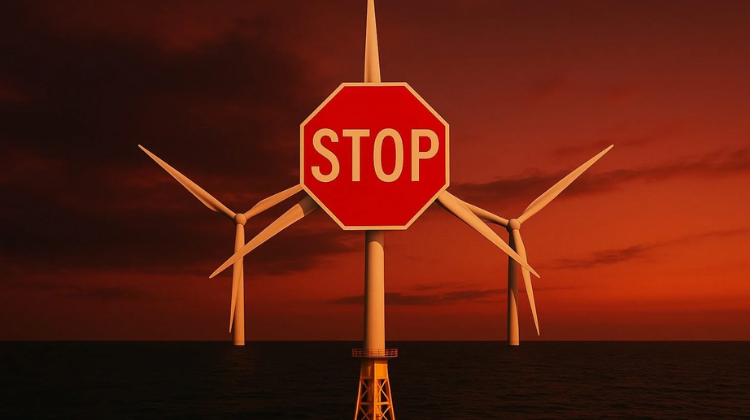Scotland is positioning itself as a global leader in offshore wind energy, driven by a strategy centred on technological innovation, coordinated planning and critical investment in infrastructure. Crown Estate Scotland, which manages the rights to the seabed out to 200 nautical miles on behalf of the Scottish Government, is currently developing its 2026–2031 Corporate Plan, with an overarching objective: to maximise the use of marine space in support of a just and effective energy transition.
The offshore wind model in Scotland is firmly “plan-led”, meaning leasing activity follows national marine spatial plans rather than reacting solely to developer interest. “The development of offshore wind in Scottish waters is plan-led, where our leasing is aligned with the Scottish Government’s marine spatial plans,” explains Ranald Leask, Senior Corporate Affairs Manager at Crown Estate Scotland. An updated Sectoral Marine Plan for Offshore Wind Energy (SMP-OWE) is expected by autumn 2025, with formal adoption shortly thereafter.
Floating Wind at the Core
Floating offshore wind plays a pivotal role in Crown Estate Scotland’s long-term planning. Among the 20 projects awarded in the ScotWind leasing round, totalling a potential installed capacity of up to 30 GW, 13 projects will deploy floating wind turbines. Additionally, all 12 INTOG projects will employ floating technology, contributing a further 5.4 GW. This makes Scotland one of the global frontrunners in scaling this emerging segment.
“This technology allows developers to utilise the seabed in deeper waters, where fixed-pile turbines would not be possible,” Leask highlights.
“Enabling commercial-scale floating wind is one of our top priorities,” he affirms. In practice, Crown Estate Scotland supports this ambition through a number of targeted actions, such as funding innovation pilots, backing the OREC Floating Wind Centre of Excellence, and producing sector-specific resources, including the Floating Offshore Wind Guide, aimed at demystifying the technology for investors, authorities, and local communities.
Unlocking Investment through Leasing and Ports
The leasing rounds reflect a strategic shift. The first round, ScotWind, raised £755 million in upfront revenues for public spending and is expected to deliver multi-billion-pound investments into the Scottish economy over the coming years. The follow-up round, INTOG, was uniquely structured to enable two streams: one to support the decarbonisation of offshore oil and gas infrastructure, and another for innovative projects up to 100 MW.
“This unique leasing approach allows developers to explore new technologies and methods,” Leask remarks.
Infrastructure development is another pillar of the strategy. Crown Estate Scotland actively collaborates with local authorities and port operators to ensure readiness. Scapa Deep Water Quay in Orkney exemplifies this commitment. With support from Crown Estate Scotland, the project recently secured a £5 million grant from the Scottish Government for pre-construction services to appoint a design-and-build contractor.
“We have supported this project for many years, and it is now moving forward apace,” Leask adds, noting that having the right port infrastructure is essential to meet the logistical demands of large-scale wind deployment.
Marine Data, Governance and Community Benefits
The strategic use of data underpins the Crown Estate’s marine management. Its Spatial Data Hub offers open access to information about marine and coastal assets, including renewable energy agreements. In collaboration with The Crown Estate, the organisation also contributes to the Marine Data Exchange, which hosts one of the world’s most comprehensive marine datasets.
“Our platform enables anyone to access information on the assets we manage,” Leask notes. This transparency facilitates better decision-making by developers, policymakers, and communities alike.
Beyond commercial activity, Crown Estate Scotland supports small-scale, environmentally focused initiatives through its Sustainable Communities Fund (SCF). Since 2020, the SCF has provided over £1.7 million to local projects, including the Eden Angling Association’s flood mitigation initiative in Cupar, Fife. “We support projects like the Eden Angling Association’s, where clear environmental benefits can be achieved,” Leask explains.
Global Collaboration and Regulatory Alignment
Crown Estate Scotland also plays a central role in ensuring cross-jurisdictional cooperation and sector alignment. It works closely with the Scottish Government and UK Government, participating in industry bodies such as the Scottish Offshore Wind Energy Council (SOWEC) to address regulatory bottlenecks.
On the international stage, Scotland is increasingly seen as a benchmark. “We meet colleagues from Europe, Asia and the Americas regularly to share insights and solve common challenges,” says Leask. Following the success of ScotWind, Crown Estate Scotland welcomed more than 20 overseas delegations, highlighting growing global interest in its approach.































